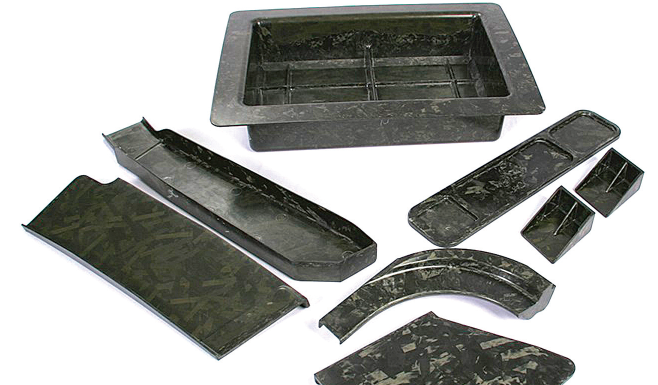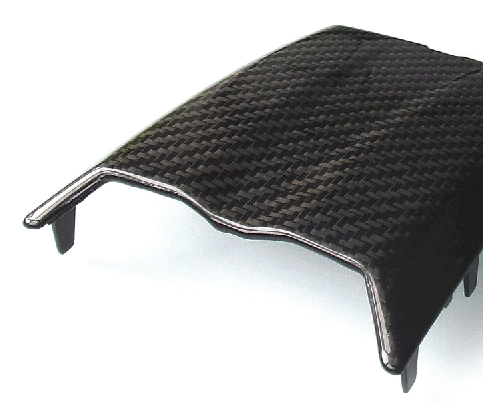The global composites market size continues to see rapid increase in demand. The market is expected to reach $130.83 billion by 2024 with projected growth rate of 7% over the forecast period, according to a study by ResearchAndMarkets.com. Rising demand for lightweight materials from automotive and aerospace industries is likely to drive market growth.
The report further stated that the composites market has observed backward as well as forward integration from various raw material manufacturers. In-house availability of major raw materials and production and utilisation of carbon fibre aids the manufacturers to reduce logistics cost. It also helps them cater to various end-use product manufacturers directly to enhance profitability. Glass fibre was estimated as the largest product segment in the global composites market, with a share of around 64% in 2015. Asia Pacific continues to dominate the global composite application market.
A report by Stratview Research on automotive exterior composites market stated that the automotive industry is ushering a new era by targeting five key areas: lightweight design, digitisation, connectivity, autonomous, and alternative powertrains. Stringent regulations regarding fuel efficiency enhancements and carbon emission reductions, such as CAFÉ Standards and EU directives on carbon emissions reduction, imposed by several governments, are set provide impetus to improvement in the current material mix in the automotive industry. All the major automakers are thus investing in those technologies to address changing business requirements in the most cost-effective manner.
As per Stratview Research, the automotive exterior composites market is likely to grow at a healthy rate over the next five years to reach $ 11.9 billion in 2024. There are several factors that are bolstering the demand for composites in automotive exterior applications. Some of the major ones are higher strength-to-weight ratio of composite parts, excellent surface finish, excellent corrosion and abrasion resistance, and durability. The combined effects of the above-mentioned factors render multi-edge benefits to the automakers as these factors not only assist automakers to meet the stringent regulations regarding fuel efficiency enhancements and carbon emission reductions but also provides more durable parts with the benefit for low-maintenance cost. It is anticipated that there would be an incessant replacement of metallic parts with the composite ones, especially in exterior applications, in the foreseen future.
The usage of composite materials in the automotive industry is broadly bifurcated into four areas: under-the-hood, exterior, interior, and others. Automotive exterior is one of the hotbeds of the composites industry as it is gaining the sheer interest of many global players. Exterior currently is the second-largest application segment in the automotive composites market after under-the-hood segment and accounts for more than one-fourth of the total market. However, the application segment is likely to witness a higher growth than under-the-hood segment in the foreseen future. Today, composites are found in all the major exterior applications including bumper, front-end module, fenders, door and roof, liftgate, active grille shutter, runner boards, headlamps, decklid, and hood. Bumper, front-end module, and fender, whereas AGS and liftgate are the fastest-growing applications.
Based on the resin type, polyester composite is expected to remain the largest segment of the market over the next five years, whereas epoxy composite is expected to witness the highest growth during the same period. Polyester is considered the perennial choice of resin for making exterior composite parts as the resin offers the required properties including class-A surface finish at a relatively lower cost. Also, the resin system can be processed in high-volume processes like compression moulding.
In terms of region, North America is expected to remain the largest automotive exterior composites market during the forecast period. High penetration of composites coupled with healthy automotive production, especially in the USA and Mexico is chiefly driving the regional market. However, Asia-Pacific is forecasted to witness the highest growth in the same period, driven by China, Japan, South Korea, and India.
Performance requirements met
Developments in composites processing took centre stage at the Composites Europe held in November. At this event, Hexcel demonstrated the breadth and depth of its technologies focusing on solutions for automotive, energy and marine markets.
Hexcel’s solutions for automotive applications address both performance requirements and production efficiencies. Hexcel worked with tooling supplier Alpex, the Institute of Polymer Product Engineering (IPPE), Johannes Kepler University Linz, and machinery supplier Engel to demonstrate that automotive transmission cross members can be made efficiently and effectively from composites. Using smart tooling, more than 100 prototypes were produced so far from Hexcel’s HexMC®-i moulding compound to validate these safety-critical parts, one of which will be displayed at the show. Macro-scale tests have demonstrated that this technology achieves the same fatigue performance as aluminium forged parts and provides additional weight-saving and function integration benefits.
HexMC®-i is a fast curing high-performance moulding material, suitable for the series production of complex shaped parts and providing excellent mechanical properties. HexMC® is suitable for the production of complex shaped parts and specifically designed for compression moulding. With long carbon fibres (50mm) and a low resin content, HexMC® provides better mechanical properties than any other short or long fibre moulding compound.

HexMC® is ideal for the production of complex shaped parts.
HexMC® moulding materials enable composite parts to be manufactured for applications where complex 3-D shapes limit the use of typical fibre reinforced matrices/reinforced laminated composites and used for applications where previously metal was the only solution; and at the same time ideal for parts with abrupt change of cross-sectional thickness. HexMC® is ideal for applications where co-curing of elements is desired, such as metal inserts or mixing with other materials and more, and can be applied for automated production process similar to SMC moulding, with production of parts guaranteed with zero material waste.
Hexcel’s HexMC®-i 2000 carbon fibre/epoxy moulding compound has been successfully used by Audi to manufacture a high-performance engine cross brace. Hexcel’s Marine display included a Diam 24 mast section made by ADH Inotec, and a section of a 42m long wing mast for a multihull race yacht made by Lorima. Both masts are manufactured with HexPly® carbon fibre prepreg. Hexcel’s offering to boat builders also includes woven reinforcements, multiaxial fabrics, honeycomb and adhesives. Hexcel’s HexTow® IM2 carbon fibre is the highest performing industrial grade Intermediate Modulus carbon fibre approved for use in the America’s Cup competition.

Composite StyLight® for various automotive applications
Hexcel’s innovations for the energy sector included HexPly® surface finishing prepregs for wind turbine blades and components. These provide a tough and durable readyto- paint blade surface without the use of gel coats. Elimination of the coating process results in shorter production cycles. No reworking of the blade surface is required and takt time is reduced by at least two hours. The company also showed a wind blade section showing the various carbon and glass materials that Hexcel supplies for this industry. These include HexPly® M79 prepregs optimised for low temperature cure and fast cycle times, HiMax™ dry non-crimp fabrics optimised for infusion technologies, and Hexcel’s cured carbon products for load bearing applications.
High-quality surfaces
INEOS Styrolution presented its latest updates on its composite StyLight at Composites Europe. The exhibit featured high-quality surfaces for automotive applications. INEOS Styrolution, the global leader in styrenics bared the latest research results on its composite StyLight®, a solution presented in 2017 at the same exhibition. Since that initial presentation, INEOS Styrolution has put a focus on analysing the production process, determining optimised process parameters for various surface types and giving customers guidance to take advantage of the material in new application designs, e.g. in the automotive industry. An example is based on a centre console part manufactured by ARRK Shapers’, a producer of carbon inner trims for the automotive industry.
Different surfaces, typical for automotive interior applications, were looked at and respective process parameters were determined for surfaces including leather grain, rough grain, high glossy surface, technical grain and fine grain. In total, around 120 different compression moulding process setups were tested to finally determine optimal process conditions.
In addition, the process parameters for in mould decoration (IMD) with foils from the company Leonard Kurz were evaluated and suitable foil types were identified.
The processing by injection moulding was optimised in parallel on the same 3D shaped part, back moulded with ribs and edge enclosure. The investigation resulted in valuable information in process parameters and suitable injection grades with given demonstrators.














